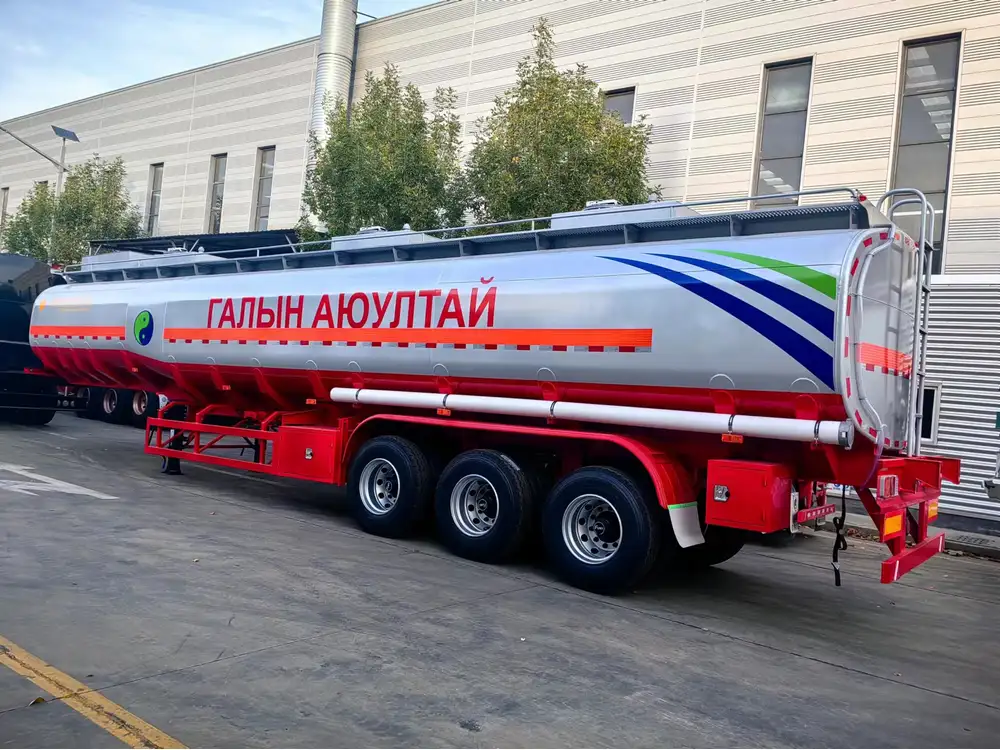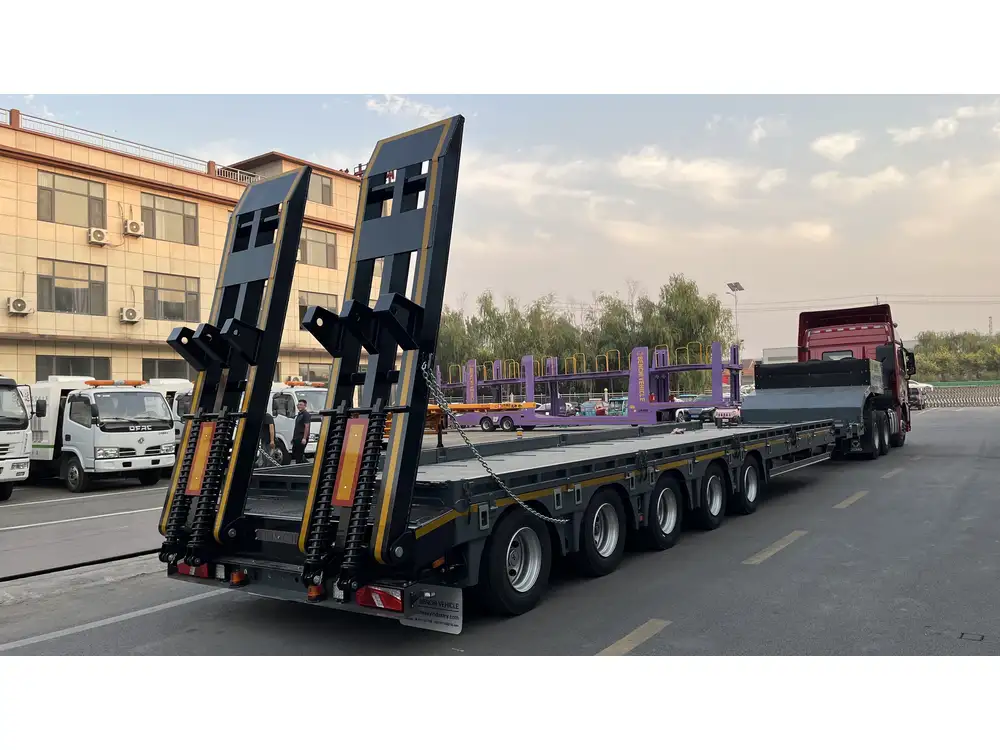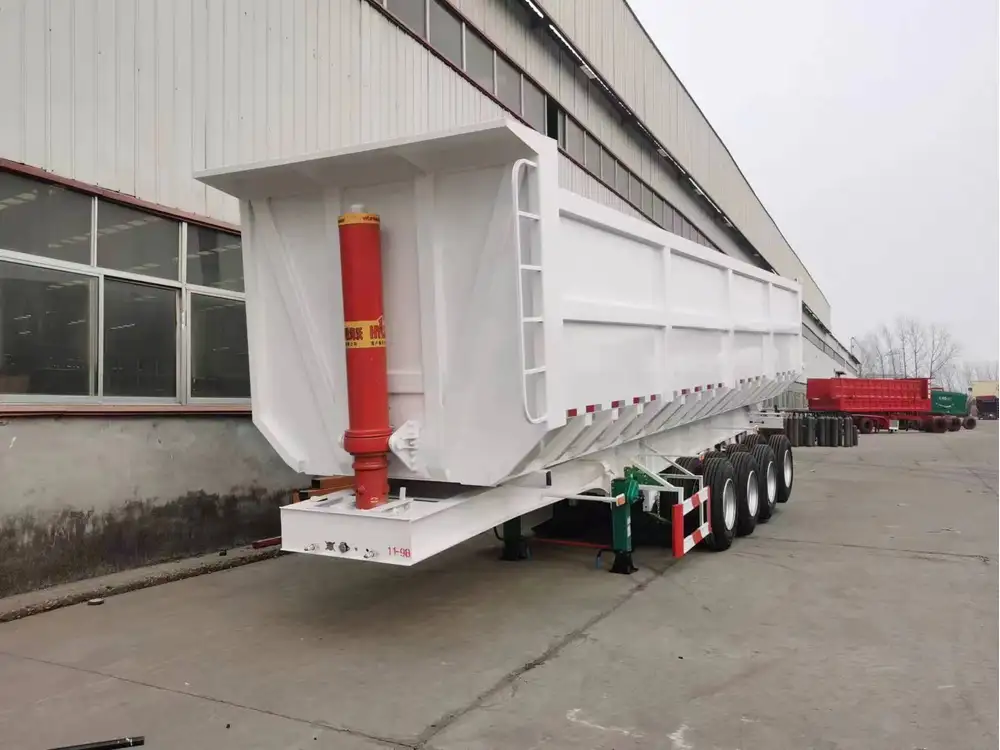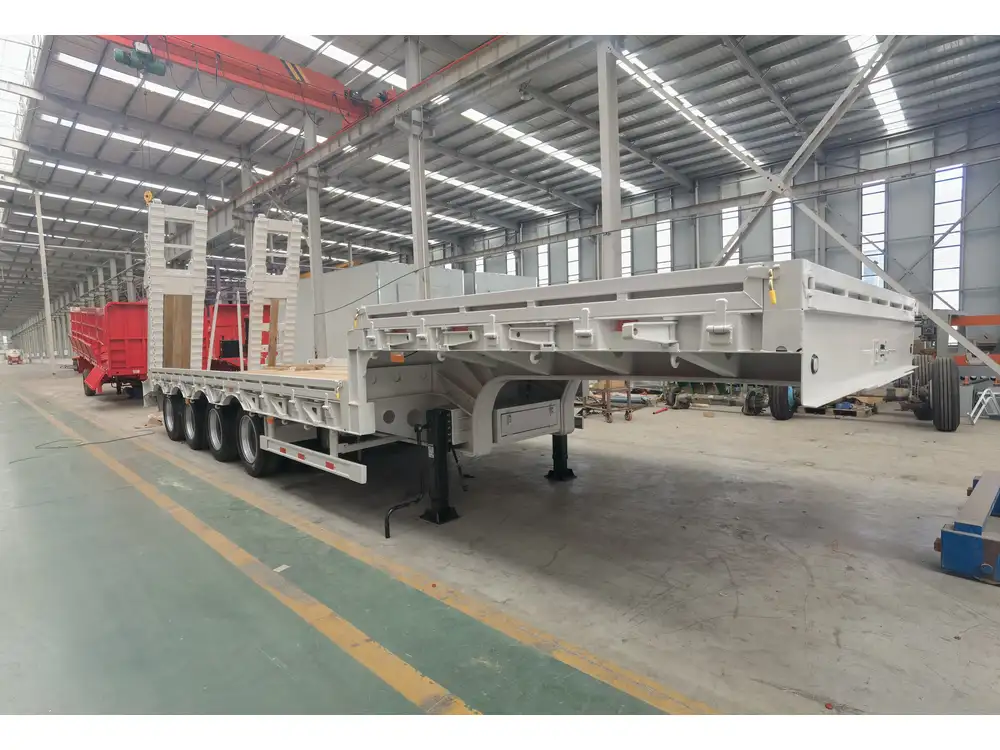In the realm of heavy transportation, selecting the appropriate trailer is pivotal to ensuring efficiency, safety, and cost-effectiveness. At CarMax Trailer, we specialize in manufacturing top-tier semi-trailers tailored to diverse logistical needs. This comprehensive guide delves into the distinctions between low bed and semi low bed trailers, equipping you with the knowledge to make informed decisions that align with your operational requirements.
What is a Low Bed Trailer?
A low bed trailer is meticulously engineered for transporting oversized and heavy-load cargo that standard trailers cannot accommodate. Characterized by its exceptionally low deck height, a low bed trailer minimizes the overall height of the load, facilitating the transportation of tall or bulky items without surpassing legal height restrictions. This design is particularly advantageous for carrying machinery, construction equipment, and industrial components.
Key Features of Low Bed Trailers
- Deck Height: Significantly lower than standard trailers, optimizing the transport of tall or heavy equipment.
- Axle Configuration: Typically equipped with multiple axles to distribute weight evenly and enhance stability.
- Structural Integrity: Reinforced frames and robust materials ensure durability under substantial loads.
- Customization Options: Adaptable to various cargo dimensions and weight specifications.

What is a Semi Low Bed Trailer?
A semi low bed trailer strikes a balance between the conventional low bed and standard flatbed trailers. While it maintains a lower deck height compared to standard trailers, it is not as low as a true low bed. This design caters to a broader range of cargo sizes and weights, offering versatility without compromising on stability or load capacity.
Key Features of Semi Low Bed Trailers
- Deck Height: Moderately low, allowing for the transportation of moderately tall loads.
- Axle Configuration: Flexible axle arrangements to accommodate varying load distributions.
- Enhanced Versatility: Suitable for a wider array of cargo, bridging the gap between heavy machinery and regular freight.
- Ease of Loading and Unloading: Elevated deck compared to low bed trailers, facilitating quicker handling of goods.
Comparative Analysis: Low Bed vs. Semi Low Bed Trailers
Understanding the nuanced differences between low bed and semi low bed trailers is essential for optimizing transport operations. The table below elucidates the primary distinctions:
| Feature | Low Bed Trailer | Semi Low Bed Trailer |
|---|---|---|
| Deck Height | Extremely low, ideal for oversized loads | Moderately low, suitable for varied cargo |
| Load Capacity | High, designed for heavy and large items | Moderate to high, versatile for different weights |
| Axle Configuration | Multiple axles for optimal weight distribution | Flexible axle setups based on load requirements |
| Versatility | Specialized for specific heavy equipment | More adaptable to a range of freight types |
| Loading Efficiency | Requires precise handling for heavy loads | Balances ease of loading with load stability |
| Operational Flexibility | Limited to specific transport scenarios | Broad applicability across various industries |

Factors to Consider When Choosing Between Low Bed and Semi Low Bed Trailers
Selecting the appropriate trailer type hinges on several critical factors:
1. Cargo Dimensions and Weight
Assess the size and weight of the items to be transported. Low bed trailers are indispensable for exceptionally heavy and tall loads, whereas semi low bed trailers offer sufficient capacity for moderately sized cargo.
2. Transportation Routes and Regulations
Evaluate the routes your trailers will traverse. Low bed trailers, with their minimized height, are advantageous for navigating routes with stringent height restrictions, ensuring compliance with transportation laws.

3. Loading and Unloading Requirements
Consider the ease and frequency of loading and unloading operations. Semi low bed trailers, with their relatively higher deck, facilitate quicker handling of goods, enhancing operational efficiency.
4. Budget and Cost Efficiency
Though low bed trailers might entail higher upfront costs due to their specialized design, semi low bed trailers offer a cost-effective alternative for businesses requiring versatility without the need for handling excessively heavy loads.
5. Future Scalability
Anticipate future transportation needs. Investing in a semi low bed trailer provides the flexibility to accommodate a broader spectrum of cargo types, catering to evolving business demands.

Why Choose CarMax Trailer for Your Transport Needs?
At CarMax Trailer, our commitment to excellence is reflected in our meticulously crafted semi-trailers. Here’s why partnering with us ensures unparalleled quality and performance:
Superior Craftsmanship
Our trailers are constructed using high-grade materials and advanced manufacturing techniques, ensuring durability and longevity even under the most demanding conditions.
Customization Expertise
We understand that each transport requirement is unique. Our team collaborates closely with clients to customize trailers that precisely align with their specific logistical needs.

Advanced Safety Features
Safety is paramount in transportation. Our trailers are equipped with state-of-the-art safety mechanisms, including advanced braking systems, secure tie-down points, and lightning protection to safeguard both cargo and operators.
Comprehensive After-Sales Support
From initial consultation to post-purchase maintenance, CarMax Trailer offers comprehensive support services, ensuring your operations run smoothly and efficiently.
Maintenance and Safety Tips for Low Bed and Semi Low Bed Trailers
Ensuring the longevity and optimal performance of your trailers necessitates regular maintenance and adherence to safety protocols.

Routine Inspections
- Structural Integrity: Regularly examine the frame and deck for signs of wear, corrosion, or damage.
- Axles and Suspension: Check for proper alignment, lubrication, and any signs of malfunction.
- Braking Systems: Ensure brakes are responsive and free from debris or obstructions.
Cleaning Practices
- Deck Cleaning: Remove debris and contaminants to prevent corrosion and ensure a safe load surface.
- Component Cleaning: Keep all moving parts clean and well-lubricated to facilitate smooth operation.
Load Management
- Weight Distribution: Distribute loads evenly to maintain trailer balance and prevent undue strain on specific components.
- Securing Cargo: Utilize appropriate tie-downs and restraints to secure loads, minimizing the risk of shifting during transit.

Safety Enhancements
- Lighting and Indicators: Regularly test all lights and indicators to ensure visibility and compliance with transportation regulations.
- Reflective Markings: Maintain clear and visible reflective markings for enhanced safety during operations in low-light conditions.
The Future of Trailer Design: Trends and Innovations
As the transportation industry evolves, so do the design and functionality of trailers. Here are some emerging trends:
Sustainable Materials
Manufacturers are increasingly adopting eco-friendly materials and sustainable manufacturing practices to reduce the environmental footprint of trailers.

Smart Technology Integration
Integration of IoT devices and smart technologies enhances trailer monitoring, providing real-time data on load status, vehicle performance, and maintenance needs.
Aerodynamic Enhancements
Innovative aerodynamic designs contribute to improved fuel efficiency and reduced emissions, aligning with global sustainability goals.
Modular Designs
Modular trailer designs offer greater flexibility, allowing for easy reconfiguration to accommodate various cargo types and sizes.

Conclusion
Choosing between a low bed and semi low bed trailer is a decision that profoundly impacts the efficiency and safety of your transportation operations. At CarMax Trailer, we provide expertly crafted semi-trailers that cater to a wide array of logistical needs, ensuring your cargo reaches its destination securely and efficiently. By understanding the distinct features and applications of each trailer type, you can make informed choices that drive your business forward.
Frequently Asked Questions
1. What types of cargo are best suited for low bed trailers?
Low bed trailers are ideal for transporting oversized and heavy equipment such as industrial machinery, construction vehicles, and large-scale infrastructure components that exceed standard height and weight limitations.

2. Can semi low bed trailers handle the same weight as low bed trailers?
While semi low bed trailers offer substantial weight capacity, low bed trailers are specifically designed to handle exceptionally heavy and oversized loads with greater stability and distribution.
3. Are there specific maintenance requirements for low bed and semi low bed trailers?
Both trailer types require regular inspections of structural integrity, axles, braking systems, and cleaning to ensure optimal performance and safety. Adhering to a rigorous maintenance schedule prolongs the lifespan of the trailers.
4. How does deck height affect the choice between low bed and semi low bed trailers?
Deck height influences the types of cargo that can be transported. Low bed trailers, with their lower deck height, are suitable for taller loads, whereas semi low bed trailers offer a balance, accommodating moderately tall and diverse cargo types.

5. What customization options are available with CarMax Trailer?
CarMax Trailer offers a range of customization options, including adjustable axle configurations, specialized loading mechanisms, enhanced safety features, and tailored dimensions to meet specific transportation requirements.



